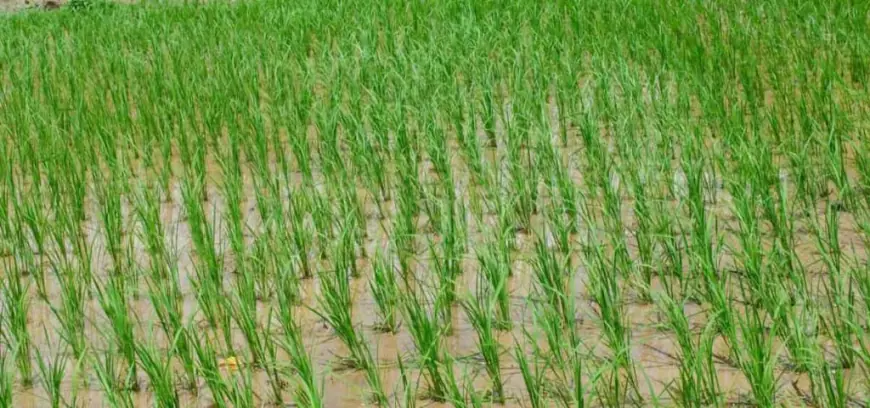Boosting Farm Efficiency with Smart Agricultural Inputs and Practices
Modern agricultural products now include a wide range of irrigation solutions designed to optimize water usage. Drip and sprinkler systems, for instance, deliver water directly to the root zone, reducing evaporation and runoff. Solar-powered pumps, rainwater harvesting units, and soil moisture sensors allow farmers to automate and tailor irrigation based on actual crop needs.

Introduction
Agriculture is at the heart of human survival and economic development. From the earliest civilizations to today’s tech-driven economies, farming has undergone constant transformation. What remains unchanged, however, is its foundational importance — feeding populations, creating livelihoods, and powering rural development. In the 21st century, the agricultural sector is undergoing another massive transition: integrating advanced inputs and smart practices to meet rising food demand, climate challenges, and sustainability goals.
One of the most vital drivers of agricultural productivity is the effective use of agricultural products such as seeds, fertilizers, pesticides, growth regulators, micronutrients, and machinery. When combined with strategic planning and efficient farm management, these tools can significantly boost yields, improve soil health, and reduce losses from pests, diseases, or climate shocks.
This article dives into the essential types of agricultural products, how they impact modern farming, and how farmers can use them wisely for long-term sustainability and profitability.
Categories of Agricultural Products
Agricultural products go far beyond the crops we consume. In the realm of farm management, this term encompasses a wide array of inputs that support plant health, productivity, and protection. These include:
-
Seeds
Quality seeds are fundamental to healthy crops. Certified, hybrid, or genetically modified seeds offer disease resistance, improved yields, and tolerance to drought or pests. -
Fertilizers
These supply essential nutrients like nitrogen (N), phosphorus (P), and potassium (K) to enhance plant growth. Micronutrients like zinc, boron, and magnesium are also crucial. -
Pesticides and Herbicides
Used to control weeds, insects, and fungal diseases. Proper application ensures crop safety and avoids resistance buildup. -
Plant Growth Regulators
These hormonal substances influence plant development — promoting rooting, flowering, or fruiting. -
Farm Machinery and Tools
From tractors to harvesters and irrigation systems, equipment improves labor efficiency and precision. -
Irrigation Solutions
Drip, sprinkler, and pivot systems conserve water and deliver moisture directly to roots. -
Storage and Packaging Materials
Post-harvest preservation helps maintain crop quality and prevents losses due to pests or spoilage.
Understanding and using these products appropriately helps farmers meet crop-specific needs, minimize input waste, and maximize returns.
Quality Seed: The First Step to a Successful Crop
The journey toward a productive harvest begins with the selection of quality seeds. Seed companies now offer climate-adapted, high-yielding, and disease-resistant varieties tailored to specific regions and soil types. Whether cultivating cereals, legumes, vegetables, or fruits, the use of certified seeds ensures uniform growth, better germination, and optimal plant development.
Farmers who invest in hybrid or treated seeds often see more consistent performance even under suboptimal conditions. In some regions, government extension services and private agri-dealers provide seed catalogs and soil compatibility guidance to help farmers choose the best options.
Fertilizers and Micronutrients: Feeding the Soil to Feed the Plant
Fertilizers play a pivotal role in replenishing soil nutrients depleted by previous crops. A balanced application of nitrogen, phosphorus, and potassium is essential for root development, flowering, and fruiting. However, many soils — especially in intensively cultivated regions — are also deficient in micronutrients like sulfur, zinc, and iron.
Ignoring these deficiencies can lead to stunted growth, poor fruiting, or low resistance to disease. Farmers are now being trained to use micronutrient-enriched fertilizers or to apply foliar sprays based on soil test reports.
Besides synthetic options, organic alternatives like compost, poultry manure, or biofertilizers are gaining popularity due to their ability to improve soil structure and microbial activity.
Efficient Pest and Weed Management
One of the costliest threats to agricultural productivity comes from pests, diseases, and weeds. Unchecked, they can destroy entire fields within days. Agricultural products like pesticides, fungicides, and herbicides are designed to protect crops at various stages of growth.
However, misuse of these chemicals can cause environmental harm, pesticide resistance, and health concerns. That’s why the concept of Integrated Pest Management (IPM) is gaining traction. IPM promotes a combination of cultural, mechanical, biological, and chemical tools — using pesticides only as a last resort.
Farmers are now incorporating practices such as crop rotation, intercropping, biological control agents, pheromone traps, and disease-resistant seed varieties into their pest control strategies.
Smart Irrigation Systems and Water-Saving Technologies
Water is becoming an increasingly scarce resource, especially in arid and semi-arid regions. Traditional flood irrigation methods are wasteful and often lead to waterlogging, salinity, and nutrient leaching.
Modern agricultural products now include a wide range of irrigation solutions designed to optimize water usage. Drip and sprinkler systems, for instance, deliver water directly to the root zone, reducing evaporation and runoff. Solar-powered pumps, rainwater harvesting units, and soil moisture sensors allow farmers to automate and tailor irrigation based on actual crop needs.
What's Your Reaction?
 Like
0
Like
0
 Dislike
0
Dislike
0
 Love
0
Love
0
 Funny
0
Funny
0
 Angry
0
Angry
0
 Sad
0
Sad
0
 Wow
0
Wow
0



















































